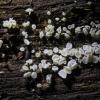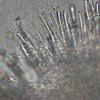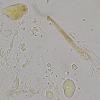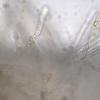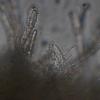
17-11-2025 19:14
herman lambertApothécie discoïde 0.6 cm diam., orangeFace hym�

17-11-2025 21:57
Philippe PELLICIERBonjour,Récolté sur bois de feuillu mort dur, no

16-11-2025 21:09
 Robin Isaksson
Robin Isaksson
Anyone recognize this acc. to pictures.? Found on

17-11-2025 21:46
Philippe PELLICIERBonjour,Récolté sur bois pourrissant de feuillu

14-11-2025 16:26
 Marian Jagers
Marian Jagers
Hello everyone, On dead wood of Cytisus scoparius

15-11-2025 23:22
Mario FilippaHello,this is what I think to be Hymenoscyphus mac

15-11-2025 20:25
 Riet van Oosten
Riet van Oosten
Hello, Found by Laurens van der Linde, Nov. 2025

14-11-2025 18:31
 Lothar Krieglsteiner
Lothar Krieglsteiner
Hello,can somebody provide me with a file of:Rothe
Lachnum virgineum ?
Thierry Blondelle,
29-12-2023 10:16
 Hello
HelloJust a confirmation of Lachnum virgineum found on dead chestnut wood. Attached are the photos of the microscopy. Thanks.
Michel Hairaud,
29-12-2023 10:39

Re : Lachnum virgineum ?
Hi Thierry,
It seems that the last cells of the hairs you show are smooth , which would rather match Dasyscyphella intead of LAchnum
Or am I wrong ?
AmitiésMichel
It seems that the last cells of the hairs you show are smooth , which would rather match Dasyscyphella intead of LAchnum
Or am I wrong ?
AmitiésMichel
Thierry Blondelle,
29-12-2023 13:35
Thierry Blondelle,
29-12-2023 13:52

Re : Lachnum virgineum ?
Ain Raitviir's key which takes into account the length of the last article of the hair and the length of the spores leads to D. nivea.
Michel Hairaud,
29-12-2023 18:15

Re : Lachnum virgineum ?
D. nivea is a common species through all winter and can be found nearly systematically on lower faces of Quercus stumps or other hardwood.
Michel
Michel
Guy Marson,
30-12-2023 22:43
Re : Lachnum virgineum ?
Hi Thierry,
What various authors consider to be Lachnum virgineum consists genetically of 5 species, as can be seen in a small section of the ITS1 (-> screenshot of an ailgnment below).
What Lachnum virgineum really is cannot be identified genetically either, because the first description of Lachnum virgineum (Batsch) P. Karst. (1871) is too old to be sequenced.
What various authors consider to be Lachnum virgineum consists genetically of 5 species, as can be seen in a small section of the ITS1 (-> screenshot of an ailgnment below).
What Lachnum virgineum really is cannot be identified genetically either, because the first description of Lachnum virgineum (Batsch) P. Karst. (1871) is too old to be sequenced.
My best wishes for 2024 :).
Guy
Thierry Blondelle,
31-12-2023 08:23

Re : Lachnum virgineum ?
Thank you Guy for this update on Lachnum virgineum.
Best wishes too
Best wishes too
